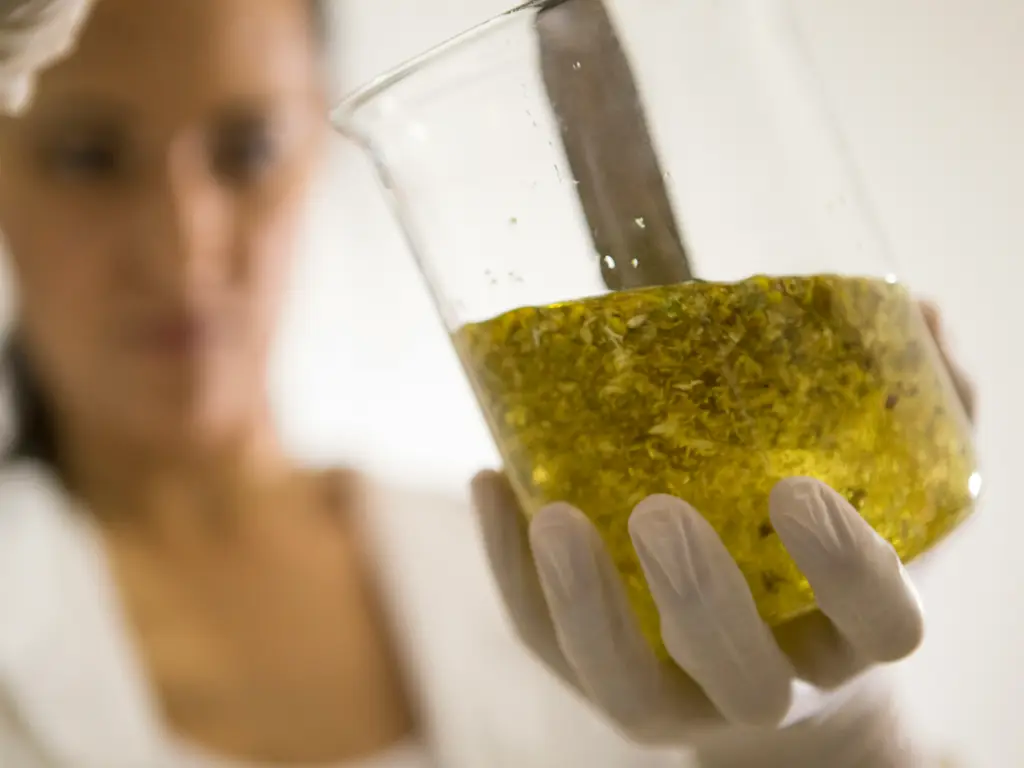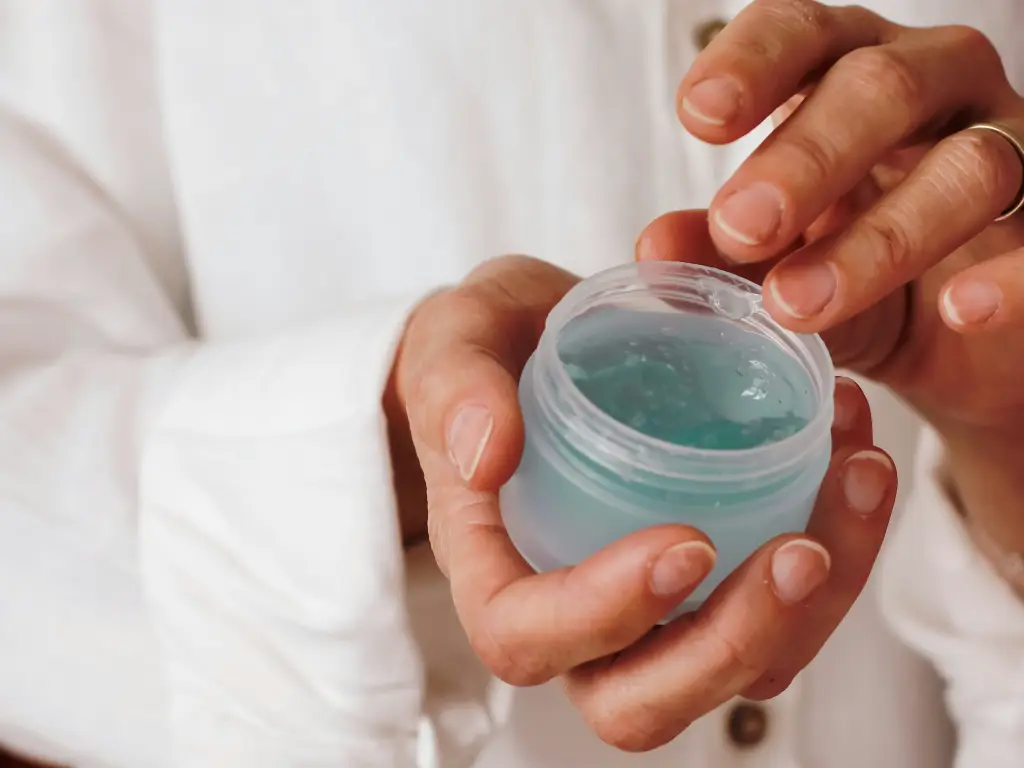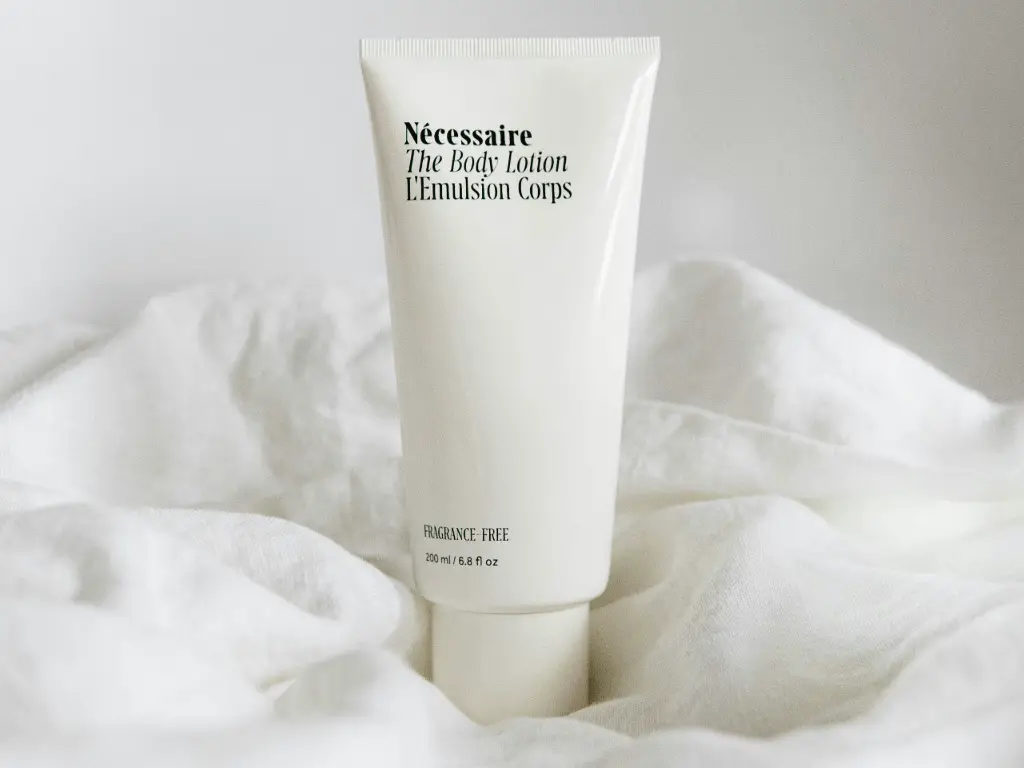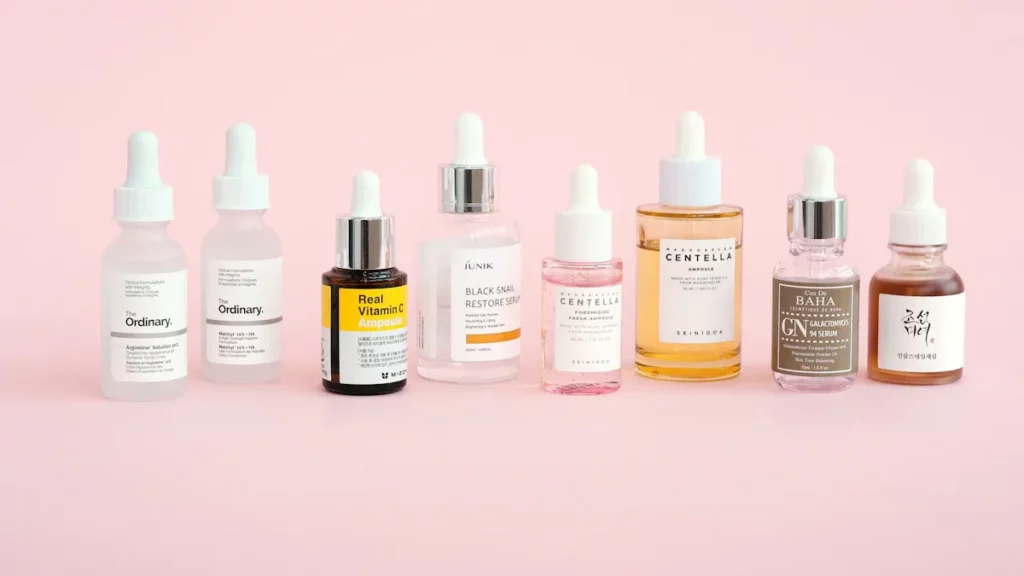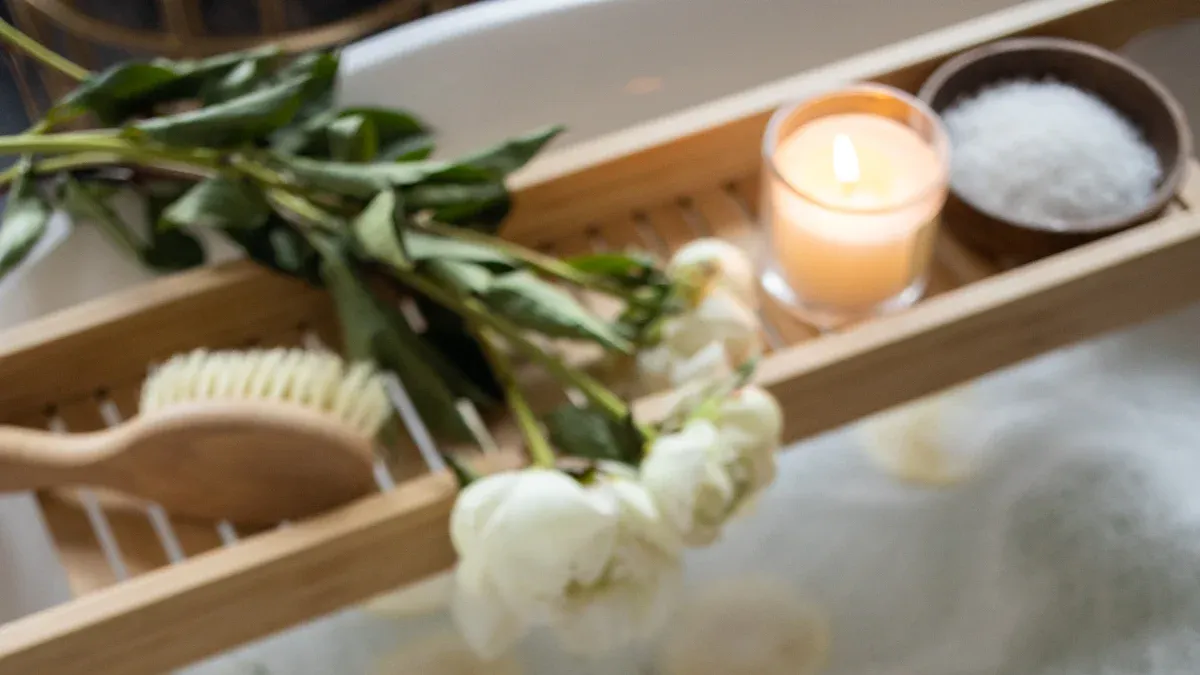
Few products capture the essence of self-care quite like bath bombs. Their vibrant colors, aromatic scents, and fizzy bursts create a luxurious escape, transforming ordinary baths into moments of indulgence. Bath bombs have become symbols of relaxation, offering you a chance to unwind from daily stress while embracing the holistic benefits of aromatherapy. With over 10 million sold annually in the U.S., their popularity reflects your growing interest in self-care rituals. The evolution of bath bombs from simple creations to sensory masterpieces mirrors your desire for both pampering and well-being.
Ancient Origins of Bathing Rituals

Oils and Herbs in Ancient Egyptian Skincare
Ancient Egypt holds a colorful history of skincare practices that were both practical and luxurious. You would find oils like sesame, moringa, and olive playing a vital role in protecting the skin from the harsh desert climate. These oils not only moisturized but also shielded against sun damage and insect bites. Honey, valued for its antibacterial properties, and milk, known for its exfoliating lactic acid, were common ingredients in skincare routines. Archaeologists have even uncovered jars in tombs containing traces of beeswax and castor oil, showcasing their importance in daily life. Skincare was so essential that workers received body oils as part of their wages. These practices highlight how ancient Egyptians combined natural ingredients with ingenuity to care for their skin.
Communal and Therapeutic Baths in Greece and Rome
The captivating history of communal baths in Greece and Rome reveals their significance beyond mere hygiene. In Greece, public baths became social hubs by the sixth century BC, featuring elaborate designs like marble lions for showers and circular pools for relaxation. The Romans elevated this concept further, constructing grand bathhouses such as the Baths of Caracalla. These spaces served therapeutic purposes, offering massages, exercise, and bathing to promote health. They also functioned as community centers, much like modern libraries or gyms. Records from 354 AD document 952 baths in Rome, underscoring their widespread appeal across all social classes. These baths were more than just places to cleanse; they were integral to the social and cultural fabric of ancient life.
Bathing as a Cultural Practice in Early Civilizations
Bathing rituals in early civilizations reflected deep cultural and religious significance. In the Indus Valley, the Great Bath of Mohenjo Daro, comparable in size to a municipal swimming pool, suggests the importance of public bathing. In Jewish communities of Late Hellenistic–Early Roman Palestine, stepped pools called miqva’ot were used for ritual purification. These pools, dating back to the second century BCE, played a key role in cleansing individuals from impurities. Across various societies, bathing practices intertwined with religion, social organization, and urban planning. The architectural layouts of bathhouses often mirrored these cultural priorities, blending functionality with spiritual and communal needs.
The Birth and Early Evolution of Bath Bombs
Mo Constantine’s 1980s Invention
The modern bath bomb owes its origins to Mo Constantine, who invented it in 1989. Inspired by the fizzing action of Alka-Seltzer tablets, she created a product that would transform the bathing experience. Originally named the “Aqua Sizzler,” this invention introduced a new way to enjoy baths by combining effervescence with soothing ingredients. The bath bomb quickly became a global phenomenon, revolutionizing how people approached self-care.
Fun Fact: Mo Constantine described the evolution of bath bombs as a “madness,” noting how far the concept has come since its humble beginnings.
The impact of her invention can be seen in the timeline below:
Year | Event | Impact |
|---|---|---|
1989 | Mo Constantine invents the bath bomb | Launched a new product that revolutionized the bathing experience and led to the establishment of a global market for bath bombs. |
This simple yet innovative idea sparked a cosmetic revolution, inspiring millions to embrace the sensory allure of bath bombs.
Lush Cosmetics and the Popularization of Bath Bombs
Lush Cosmetics played a pivotal role in bringing bath bombs into the mainstream. As a company known for its handmade and eco-friendly products, Lush introduced a wide variety of bath bombs that appealed to environmentally conscious consumers. Their commitment to sustainable practices and ethical ingredient sourcing resonated with those who prioritize environmental responsibility.
You might recognize Lush bath bombs for their vibrant colors, unique shapes, and captivating scents. These features, combined with the brand’s focus on sustainability, helped elevate bath bombs from a niche product to a staple in self-care routines worldwide. Lush’s marketing strategies and dedication to quality have made them a leader in the essential oil bath bomb market, further solidifying the product’s place in modern luxury.
The Simple Beginnings of Bath Bomb Ingredients
The original bath bomb formula relied on a few basic ingredients: baking soda, citric acid, and essential oils. Baking soda and citric acid created the iconic fizzing effect when dropped into water, while essential oils provided soothing aromas. This simplicity made bath bombs accessible and easy to produce, laying the foundation for their widespread popularity.
Over time, manufacturers began experimenting with additional ingredients to enhance the bathing experience. Natural colorants, dried flowers, and skin-nourishing oils were added to create more luxurious and visually appealing products. These innovations marked the beginning of the evolution of bath bombs, transforming them from simple fizzing tablets into multi-sensory masterpieces.
Today, you can find bath bombs in countless variations, each designed to cater to specific preferences and needs. Whether you seek relaxation, rejuvenation, or a touch of indulgence, the evolution of bath bombs ensures there is something for everyone.
The Evolution of Bath Bombs in Modern Times
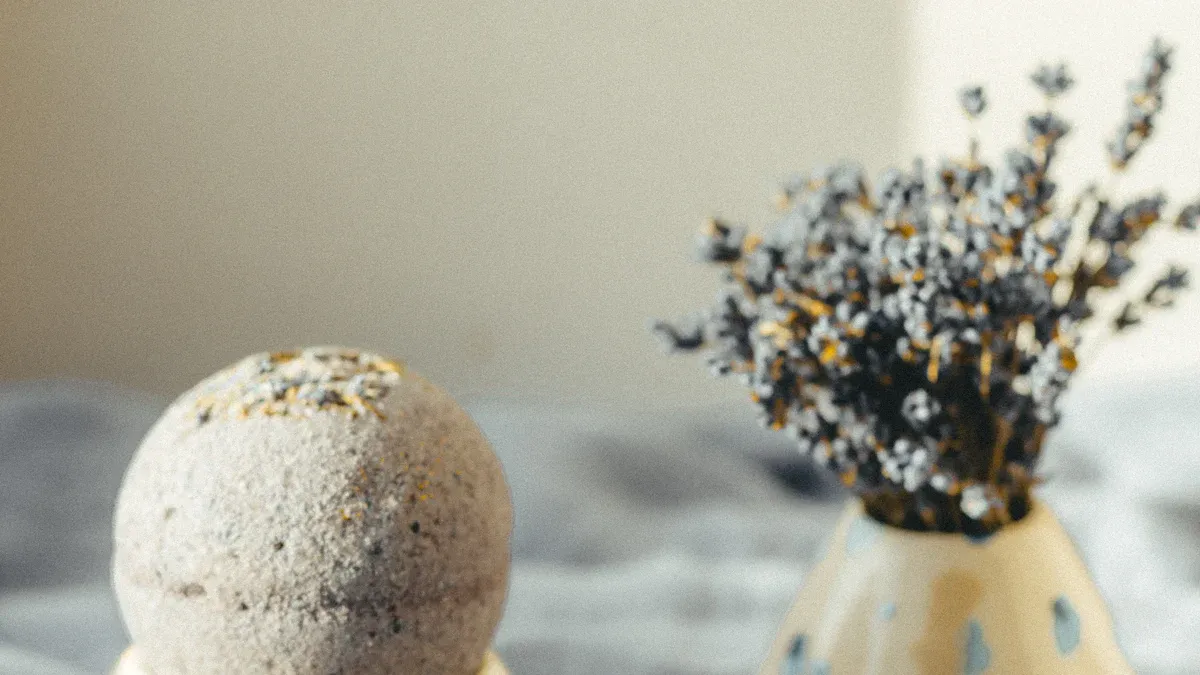
Innovations in Ingredients and Skin Benefits
Modern bath bombs have evolved far beyond their simple beginnings, offering you a more luxurious and therapeutic bathing experience. Manufacturers now prioritize natural and organic ingredients, such as plant-based oils and essential oils, to enhance relaxation and skin health. For example, CBD and adaptogenic botanicals are increasingly used to relieve stress and improve mood. Functional bath bombs cater to specific skincare needs, like detoxification and hydration, making them a versatile addition to your self-care routine.
Sustainability has also become a key focus. Many brands now use biodegradable and eco-friendly ingredients, ensuring that your indulgence in a luxurious bath experience aligns with environmental responsibility. This shift reflects the growing demand for products that combine relaxation with ethical practices.
Aesthetic Enhancements: Colors, Glitter, and Unique Shapes
The visual appeal of bath bombs has transformed them into works of art. Vibrant colors, shimmering glitter, and creative shapes make each bath bomb a sensory delight. You can find designs inspired by everything from galaxies to cupcakes, adding a playful touch to your bathing experience.
Social media has amplified this trend, with platforms like Instagram and TikTok showcasing mesmerizing videos of bath bombs dissolving into colorful swirls. Viral marketing campaigns, such as Papa John’s quirky pizza-inspired bath bomb, highlight how brands use aesthetics to capture your attention and spark joy. These enhancements turn an ordinary bath into a luxurious bath experience that feels both indulgent and fun.
Functional Upgrades: Aromatherapy and Wellness Features
Modern bath bombs are not just about relaxation; they also offer therapeutic benefits. Essential oils like lavender and eucalyptus provide aromatherapy, helping you unwind or feel invigorated. Epsom salts, rich in magnesium, soothe sore muscles and reduce inflammation, promoting physical well-being. Ingredients like shea butter and cocoa butter deeply moisturize your skin, leaving it soft and nourished.
These functional upgrades make bath bombs a holistic wellness tool. Whether you seek relief from stress, muscle tension, or dry skin, the modern bath bomb delivers a tailored solution. By combining relaxation with tangible health benefits, these innovations ensure that every bath feels like a spa-worthy retreat.
Cultural and Social Impact of Bath Bombs
The Role of Bath Bombs in Self-Care Culture
Bath bombs have become a self-care staple, symbolizing the importance of taking time for yourself. They offer more than just an indulgent bath ritual; they represent a broader cultural shift toward prioritizing mental and emotional well-being. In 2023, surveys revealed that 60% of American adults focused on mental health, driving the demand for bath bombs marketed for relaxation and stress relief. The wellness economy also grew by 8%, reflecting the increased demand for products that support self-care routines.
Tressie McMillan Cottom highlights the distinction between commodified self-care and genuine self-care. She explains that while bath bombs provide temporary pleasure, true self-care involves creating space for reflection and setting personal boundaries.
Despite this, bath bombs remain a great addition to self-care regimens. They encourage you to pause, relax, and enjoy an indulgent experience, even if only for a short time.
Social Media and the Demand for Bath Bombs
Social media has played a significant role in shaping the demand for bath bombs. Platforms like Instagram and TikTok showcase mesmerizing videos of bath bombs dissolving into colorful swirls, captivating audiences worldwide. Market research shows that brands increasingly rely on social media to boost visibility and engage consumers. Influencer marketing, in particular, has proven effective in driving the demand for bath bombs.
Visually appealing packaging and interactive campaigns further enhance their popularity. For example, brands like Lush have created handcrafted bath bombs that not only look stunning but also align with the growing interest in self-care and mindfulness. These efforts have turned bath bombs into a social media sensation, making them a must-have for anyone seeking the ultimate self-care experience.
The DIY and Artisanal Bath Bomb Movement
The rise of DIY bath bomb kits and handcrafted bath bombs reflects a growing interest in creativity and sustainability. Many consumers now prefer making their own bath products at home, using natural ingredients that align with their values. Social media platforms like Pinterest and TikTok have fueled this trend, offering tutorials and inspiration for creating unique designs.
The bath bomb market has responded to this increased demand for artisanal products by offering more options for customization. Brands like Da Bomb have embraced this movement, creating visually stunning products that encourage sharing and community participation. Whether you’re crafting your own or purchasing from small businesses, the DIY and artisanal bath bomb movement adds a personal touch to your self-care rituals.
Modern Trends and Market Demand for Bath Bombs
CBD-Infused Bath Bombs and Wellness Trends
CBD-infused bath bombs have become a significant trend in the wellness industry. These products combine the relaxing properties of traditional bath bombs with the therapeutic benefits of CBD. As a natural compound derived from hemp, CBD is known for its anti-inflammatory and skin-calming properties. This makes it an ideal ingredient for soothing irritated skin and promoting relaxation.
The global CBD market is projected to reach $47.2 billion by 2025, growing at an impressive annual rate of 21.3% since 2020. This rapid growth reflects the increasing demand for plant-based alternatives to synthetic ingredients. Many consumers now prefer products that align with their desire for natural and holistic wellness solutions. Additionally, the relaxation of cannabis regulations worldwide has encouraged brands to invest in CBD research and product development. This has led to a surge in innovative products, including CBD-infused bath bombs.
Clinical studies continue to highlight CBD’s potential benefits, such as reducing inflammation and providing antioxidant protection. These findings have enhanced its credibility as an effective skincare ingredient. By incorporating CBD into your bath routine, you can enjoy a luxurious experience that supports both your physical and mental well-being.
Sustainability and Eco-Friendly Innovations
Sustainability has become a driving force in the bath bombs market. Many brands now focus on creating eco-friendly products that minimize environmental impact. This shift reflects a growing awareness of the need for sustainable practices in the beauty and personal care industry.
Eco-conscious consumers often look for bath bombs made with biodegradable ingredients and minimal packaging. Some companies have even introduced “naked” bath bombs, which eliminate the need for plastic wrapping entirely. These innovations not only reduce waste but also align with your desire to make environmentally responsible choices.
Sustainable practices extend beyond packaging. Many manufacturers prioritize sourcing natural and organic ingredients that are ethically harvested. This ensures that the production process supports both environmental and social sustainability. By choosing eco-friendly bath bombs, you can indulge in self-care while contributing to a healthier planet.
Customization and the Role of Manufacturers Like Oully
Customization has become a key trend in the bath bombs market. Consumers increasingly seek products tailored to their unique preferences and needs. Whether you want a specific scent, color, or skin benefit, customized bath bombs allow you to create a personalized bathing experience.
Manufacturers like Oully play a crucial role in meeting this demand. With over a decade of experience in beauty and personal care, Oully specializes in creating customizable solutions for global brands. Their state-of-the-art facility offers a wide range of options, from custom formulations to unique packaging designs. This flexibility enables brands to bring their vision to life while catering to diverse consumer preferences.
Oully’s commitment to innovation and sustainable practices ensures that their products meet the highest quality standards. By partnering with manufacturers like Oully, brands can deliver bath bombs that combine luxury, functionality, and environmental responsibility. This not only enhances the market demand for bath bombs but also sets a new standard for excellence in the industry.
The journey of bath bombs reflects a fascinating evolution, blending ancient traditions with modern innovation. From the luxurious oils of ancient Egypt to the Renaissance’s alchemical bath fizzes, bathing has always symbolized indulgence. The Industrial Revolution introduced mass production, while the late 20th century saw Lush Cosmetics transform bath bombs into vibrant, effervescent sensations. Today, their appeal continues to grow, driven by trends like sustainability, customization, and therapeutic benefits.
You can now enjoy bath bombs tailored to your preferences, whether you seek relaxation, wellness, or a touch of luxury. With their ability to combine sensory delight and self-care, bath bombs remain a timeless symbol of indulgence. Explore the diverse options available and discover the perfect addition to your self-care routine.
FAQ
What are bath bombs made of?
Bath bombs typically contain baking soda, citric acid, and essential oils. These ingredients create the fizzing effect and provide soothing aromas. Many also include natural colorants, dried flowers, or skin-nourishing oils for added benefits.
Are bath bombs safe for sensitive skin?
Most bath bombs are safe for sensitive skin if they use natural ingredients. Look for products free of artificial dyes and fragrances. Always check the label for allergens or irritants.
Tip: Test a small amount on your skin before using a new product.
How do I store bath bombs to keep them fresh?
Store bath bombs in a cool, dry place away from moisture. Use airtight containers or resealable bags to prevent exposure to humidity. Proper storage helps maintain their fizz and fragrance.
Can I use bath bombs in a hot tub?
Avoid using bath bombs in hot tubs unless the product specifically states it is safe. Oils and additives can clog filters or damage the system. Always check the manufacturer’s recommendations.
Do bath bombs expire?
Yes, bath bombs expire. Most remain effective for six months to a year. Over time, the fizzing effect and fragrance may weaken. For the best experience, use them within the recommended timeframe.
Note: Proper storage can extend their shelf life.

